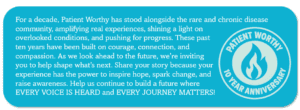A new study published at ScienceDirect.com sheds light on the profound social challenges faced by individuals and families living with rare diseases. The article examines how rare diseases, while medically complex, also generate significant emotional, social, and economic impacts that are often overlooked by healthcare systems and policymakers.
According to the study, people with rare diseases frequently encounter barriers far beyond the medical symptoms of their condition. Social isolation is a common experience, as many patients struggle to find others who understand their situation. Because rare diseases are, by definition, uncommon, there is often a lack of awareness and knowledge among friends, colleagues, and even healthcare professionals. This lack of understanding can lead to feelings of loneliness and marginalization, compounding the emotional burden of managing a chronic illness.
The research also reveals that families of those affected by rare diseases face substantial stress. Parents and caregivers often become advocates, navigating complicated healthcare systems to access treatments, support, and information. The time and energy required can impact employment, finances, and overall family wellbeing. The article points out that many families incur significant out-of-pocket expenses for treatments, travel, and specialized care, not all of which are covered by insurance or public health programs.
Another key finding of the study is the role of patient organizations and online communities. These groups provide much-needed support, advocacy, and information sharing among rare disease patients and their families. While they help reduce isolation and raise awareness, the article notes that access to such networks is not universal, especially in low-resource settings or for ultra-rare conditions.
The study calls for greater recognition of the social dimensions of rare diseases in public health policy. It recommends that governments and healthcare providers address not only the clinical but also the psychosocial needs of patients and their families. This could include improved access to counseling services, more comprehensive insurance coverage, and greater investment in patient advocacy and education initiatives.
In conclusion, the article argues that understanding and addressing the social impact of rare diseases is essential for improving the lives of those affected. It emphasizes that rare diseases are not just a medical issue but a social one, requiring coordinated efforts from health systems, policymakers, and communities to ensure no one is left behind.





